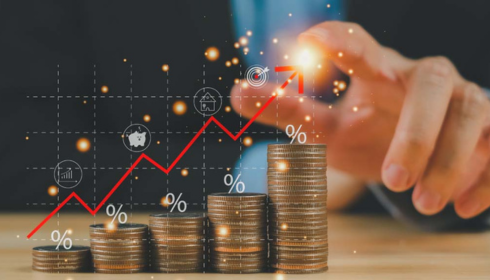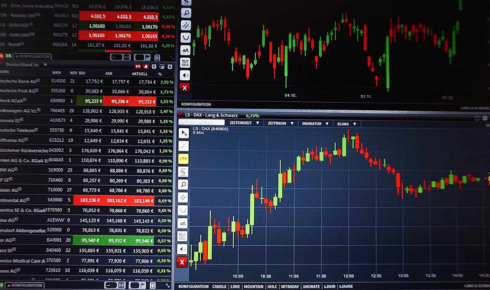
1. What are the main risks in cryptocurrency trading?
The primary risks include:
Volatility: The cryptocurrency prices could change significantly in the shortest time frames.
Security risks: Hackers may steal money from exchanges or wallets.
Regulatory uncertainty: Regulations across different countries are not well defined and vary.
Liquidity risk: Certain cryptocurrencies would be hard to sell at expected prices.
Market manipulation: Cryptocurrency markets can easily fall victim to “pump and dump” schemes.
2. Why is cryptocurrency so volatile?
Cryptocurrencies are volatile for all these reasons:
Speculative nature: Most of the cryptocurrency trading is speculative.
Market sentiment: News, social media, and events can swing the market mood of people quickly.
Low market capitalization: A more significant price movement will be seen in cryptocurrencies having less market caps.
Lack of regulation: Without established regulatory frameworks, higher swings in prices will be seen.
3. What are the security risks I need to be concerned about when trading cryptocurrency?
The security risks when trading cryptocurrency include:
Exchange hacks: Hackers can steal money from crypto exchanges.
Phishing attacks: Someone tries to get your login credentials or private keys.
Wallet vulnerabilities: If your private keys or passwords get compromised, someone can steal your funds.
Social engineering: A person can scam you into letting them access your account.
4. How do I secure my cryptocurrency against theft?
How to secure your cryptocurrency:
Use hardware wallets, also known as cold storage, for storing your private keys offline.
Enable two-factor authentication, 2FA, on your exchange and wallet accounts.
Store your private keys and recovery phrases securely and do not share them with anyone.
Do not keep large amounts of crypto on an exchange as exchanges are susceptible to hacks.
5. What is market manipulation in cryptocurrency trading?
Market manipulation refers to activities that are imposed to pump or deflate the price of a cryptocurrency for trading and other benefits. The common modes of carrying out market manipulation involve pump-and-dump schemes, spoofing, and wash trading.
6. How do I avoid market manipulation?
To avoid market manipulation, it is important to:
Use only the most transparent trading and executing markets.
Be extra careful with newly launched penny cryptocurrencies or coins with low liquidity.
Reliance on fundamental analysis and technical indicators rather than social media hype.
Be cautious of “too good to be true” price movements or unsolicited investment tips.
7. What are the risks of trading on margin or using leverage?
Trading on margin or using leverage increases your potential profits but also magnifies your losses. If the market moves against you, you may end up owing more than your initial investment. In extreme cases, leveraged positions can be liquidated by the exchange.
8. What is slippage in cryptocurrency trading?
Slippage happens when the cryptocurrency price has changed between the time the trade order was given and when it gets executed. This can make a situation where purchases are entered at a higher price than expected or selling at a lower one. This usually occurs in volatile markets.
9. How does liquidity risk affect cryptocurrency trading?
Low liquidity means there are not enough buyers and sellers in the market, so there will not be an easy way to get out of large trades without impacting the price significantly. Slippage can occur and position exit would become challenging, incurring losses when trying to get out.
10. Can regulatory changes affect cryptocurrency prices?
Yes, regulatory changes can have an impact on the cryptocurrency price. In fact, a government may create regulations that enhance or deter people from using the cryptocurrencies. Crackdown news or legalization news can have rapid price effects.
11. How do governments’ regulations impact cryptocurrency markets?
Regulations by government can impact the cryptocurrency market as follows:
Place tax obligations and reporting requirements
Ban or place restrictions on use of cryptocurrencies.
Creating a legal framework for crypto exchanges that can help to improve the credibility of the market.
Regulating Initial Coin Offerings (ICOs) and other token sales to protect investors.
12. What is the risk of investing in new or unproven cryptocurrencies?
New or unproven cryptocurrencies are very risky because they may have:
Lack of liquidity, making it hard to exit a position.
Uncertain technology or unproven use cases.
Scams or rug pulls, where developers abandon the project after attracting investments.
Regulatory uncertainty, as governments may regulate or ban the project.
13. What are rug pulls in the cryptocurrency space?
A rug pull occurs when the creators of a cryptocurrency or decentralized finance (DeFi) project suddenly withdraw all the liquidity from a pool or abandon the project, leaving investors with worthless tokens.
14. What are the risks of trading on decentralized exchanges (DEXs)?
While DEXs are more private and allow for more control over funds, they have risks such as:
Smart contract vulnerabilities: Bugs in the code can lead to loss of funds.
Lack of customer support: DEXs often don’t offer customer service, making it harder to resolve issues.
Scams: Fake projects or tokens can be easily listed without proper scrutiny.
15. What is the risk of investing in stablecoins?
While stablecoins are meant to have a stable value, there are risks, such as:
Collateral risks: If the reserves that back the stablecoin are compromised or mismanaged, it could lose its peg to the dollar.
Regulatory risks: Governments may impose stricter regulations on stablecoins.
De-pegging: In rare cases, stablecoins can lose their peg, which would result in severe losses for investors.
16. How can I minimize risks when trading cryptocurrencies?
To minimize risks:
Diversify your portfolio to spread out your risk.
Only invest money you can afford to lose.
Use stop-loss orders to limit potential losses.
Stay informed about market trends and technological developments.
17. What are the risks of cryptocurrency pump-and-dump schemes?
In a pump-and-dump scheme, a group of traders artificially inflate the price of a cryptocurrency (the “pump”) and then sell off their holdings at the higher price (the “dump”). Unsuspecting investors who buy during the pump may suffer significant losses when the price crashes.
18. How can I spot a pump-and-dump scheme?
Signs of a pump-and-dump include:
Unusual price movements without any fundamental news.
Social media and messaging platforms hype on buying fast.
Cryptocurrencies with a low market capitalization and with low trading volume.
19. What are the risks of trading cryptocurrencies without adequate research?
There is a likelihood of falling victim to scams or investing in assets with extreme speculation, among other emotional decision-making in trading. Always make sure to perform due diligence; this includes technology, team, market trends, and news that may be happening about the cryptocurrency you are interested in.
20. How does the volatility of cryptocurrencies impact long-term investment strategies?
Cryptocurrency volatility can make long-term investment strategies difficult, as market swings may discourage holding positions. However, some investors view this volatility as an opportunity for higher returns, while others may prefer more stable assets.
21. Is it risky to trade cryptocurrency during a market crash?
Yes, market crashes can expose you to huge losses. However, some traders will view it as a buying opportunity if they believe the prices will go up. Always manage risk and use stop-loss orders to contain potential losses when the market goes down.
22. What are the risks of using cryptocurrency derivatives (futures/options)?
Cryptocurrency derivatives let you bet on price movements without owning the underlying asset, but they come with high risk:
Leverage can amplify profits and losses.
Forced liquidations may result from expiration dates if your position moves against you.
Complexity: The mechanics of futures and options require more knowledge and experience.
23. Will cryptocurrency trading impact my credit score?
It has no effect on your credit score, though; if you trade using loans or credit cards and miss payments, this will harm your credit.
24. What is the risk of holding cryptocurrencies for the long term?
Risks for long-term holding in cryptocurrencies are as follows:
It has volatility with regards to prices because the price could change very greatly over an extended period of time.
There’s a change in regulations, affecting the legal and adoption aspects of cryptocurrencies.
Technological risks, like blockchain vulnerabilities or network issues.
25. Does cryptocurrency tax reporting carry risks?
Cryptocurrency transactions might be taxed and not reporting these properly can cause penalties. The tax laws change according to jurisdictions, and IRS and other taxing authorities increasingly look into the crypto tax compliance.
26. What is the risk of trading on unreliable exchanges?
Unreliable exchanges may suffer from poor security, high fees, lack of customer support, and, in the worst case, may shut down or be subject to regulatory actions. Always trade on reputable, regulated platforms.
27. What is the risk of investing in ICOs (Initial Coin Offerings)?
ICOs carry high risk because they:
Are often unregulated, leaving investors vulnerable to fraud.
May not have a working product or proven use case.
Can suffer from poor market adoption or be abandoned by developers.
28. How do I evaluate the risk of a cryptocurrency project?
Evaluate a project’s risk by considering:
The team: Research the experience and background of the project’s developers.
The whitepaper: Review the project’s whitepaper to understand the technical aspects and goals.
The community: A strong, active community may indicate a healthier project.
Regulatory environment: Consider whether the project may face regulatory hurdles.
29. How do emotions relate to risk in cryptocurrency trading?
Emotions- fear and greed- often cloud judgment, and may cause investors to make hasty decisions, leading to more risks. Emotional traders are known for panicking out of their trades during losses or running too hard in their pursuits of high-flying profits.
30. Overtrading- What’s the risk?
Overtrading can lead to excessive transaction fees, poor decision-making, and amplified losses. It is, therefore, essential to stick to a strategy, avoid trading based on emotions, and manage your positions with proper risk management techniques.
Conclusion:
Cryptocurrency trading is fun, but the risks are always there. Knowing the risk, taking due security measures, and staying knowledgeable can help an investor to overcome the unpredictable situation of cryptocurrency trading. Always perform thorough research on the investments before making a decision, limit your risk as much as possible, and avoid fear-and-greed-driven decisions.


